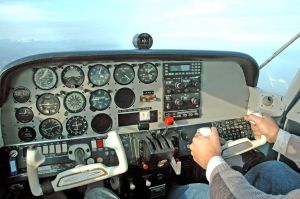RMIT has invested in a $200,000 custom-designed laboratory that will enable researchers to work with the aviation industry to develop and test a wide range of new technologies.

The state-of-the-art simulation and test lab was developed in conjunction with SimRoom and will support research into new communication, navigation, surveillance and avionics systems for manned and unmanned aircraft. The lab will also develop decision-support tools and human machine interfaces for air traffic controllers, according to the news release.
Located at the School of Aerospace, Mechanical and Manufacturing Engineering’s Sir Lawrence Wackett Aerospace Centre in Bundoora, the laboratory also features advanced eye and head tracking equipment which will analyse human performance in the monitoring and control of aircraft.
Dr Reece Clothier, Deputy Director of the Wackett Centre, says the increase in the level of autonomy in cockpit and in air traffic control systems affects human interaction and creates new issues in the system.
“Physical, social and cognitive issues – such as user situational awareness, task load, fatigue, boredom, complacency, fixation, trust and mode confusion – can all contribute towards errors in the operation of highly automated aerospace systems,” he said.
A 230-degree, floor-to-ceiling, high definition visualisation and motion system will provide test pilots with a realistic experience allowing the, through the push of a button, to fly a range of aircrafts ranging from small four-seat planes, commercial passenger aircraft through to modern jet fighters.
RMIT says collaborative research is already underway at the lab, with RMIT air traffic management (ATM) expert Associate Professor Roberto Sabatini leading a project with Thales Australia’s Centre for Advanced Studies in ATM (CASIA).



















